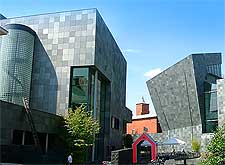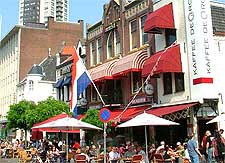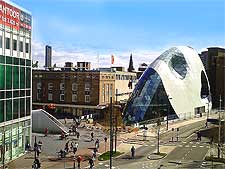Eindhoven History Facts and Timeline
(Eindhoven, North Brabant, Netherlands)

Eindhoven's history begins as a small village that went by the name of Endehoven or 'End Yards'. Historical records show that its growth was down to the ambitions of one man. Henry I, the Duke of Brabant, granted Eindhoven a city charter in 1232. He had plans to turn this unassuming village into a town of some stature.
Throughout the Middle Ages, control of the city passed from Dutch hands into Spanish hands and back again several times. In 1486, it was almost completely destroyed during a raid by the Duke of Guelders' forces. Such political instability made it necessary to strengthen Eindhoven's defences.
It is thought that a castle was built here at some point during the 15th century, while the walls themselves were improved on several occasions. During a final siege of the city, which led to its capture by Spanish forces, the defensive walls were completely destroyed. Finally, in 1629, Eindhoven was made part of the Republic of the Netherlands.

Modern History
During the 19th century, Eindhoven was profoundly changed by the arrival of the Industrial Revolution, an especially important period of local history. In 1820, the road between Eindhoven and Liege in Belgium was paved, allowing people and goods to travel much more easily between the two cities. Then, in 1891, a factory opened up to manufacture light bulbs. As more and more people and towns adopted new fangled electric lighting, the Philips company soon had to expand to keep up with demand.
In the late 19th and early 20th centuries, other industries arrived here, such as textiles and tobacco. Later, Eindhoven became associated with automobile production. In particular, the DAF factory decided to establish itself here. By 1920, history shows that Eindhoven was home to around 45,000 people. Many of them were employed by Philips and lived in special housing estates built for the company's workers. Indeed, the city had grown to such an extent that a new municipality had to be created, drawing within its boundaries several towns and villages from the surrounding area.

In World War Two, Eindhoven did not escape the damage inflicted by armies and aeroplanes. Several parts of the city were affected by bombing raids. After the war, it was decided, in many cases, to replace damaged historic buildings with modern counterparts, rather than conserve them.
Today, Eindhoven's deliberate choice of contemporary architecture gives the city a very modern look. Of interest, many of its inhabitants come from outside of the Netherlands.
The city has become a top centre for technology in Europe. Indeed, its links with Philips are still important. Known today as the 'City of Light', it is home to Royal Philips Electronics, which is primarily involved in research and development.
 Eindhoven's history begins as a small village that went by the name of Endehoven or 'End Yards'. Historical records show that its growth was down to the ambitions of one man. Henry I, the Duke of Brabant, granted Eindhoven a city charter in 1232. He had plans to turn this unassuming village into a town of some stature.
Eindhoven's history begins as a small village that went by the name of Endehoven or 'End Yards'. Historical records show that its growth was down to the ambitions of one man. Henry I, the Duke of Brabant, granted Eindhoven a city charter in 1232. He had plans to turn this unassuming village into a town of some stature.
 In World War Two, Eindhoven did not escape the damage inflicted by armies and aeroplanes. Several parts of the city were affected by bombing raids. After the war, it was decided, in many cases, to replace damaged historic buildings with modern counterparts, rather than conserve them.
In World War Two, Eindhoven did not escape the damage inflicted by armies and aeroplanes. Several parts of the city were affected by bombing raids. After the war, it was decided, in many cases, to replace damaged historic buildings with modern counterparts, rather than conserve them.